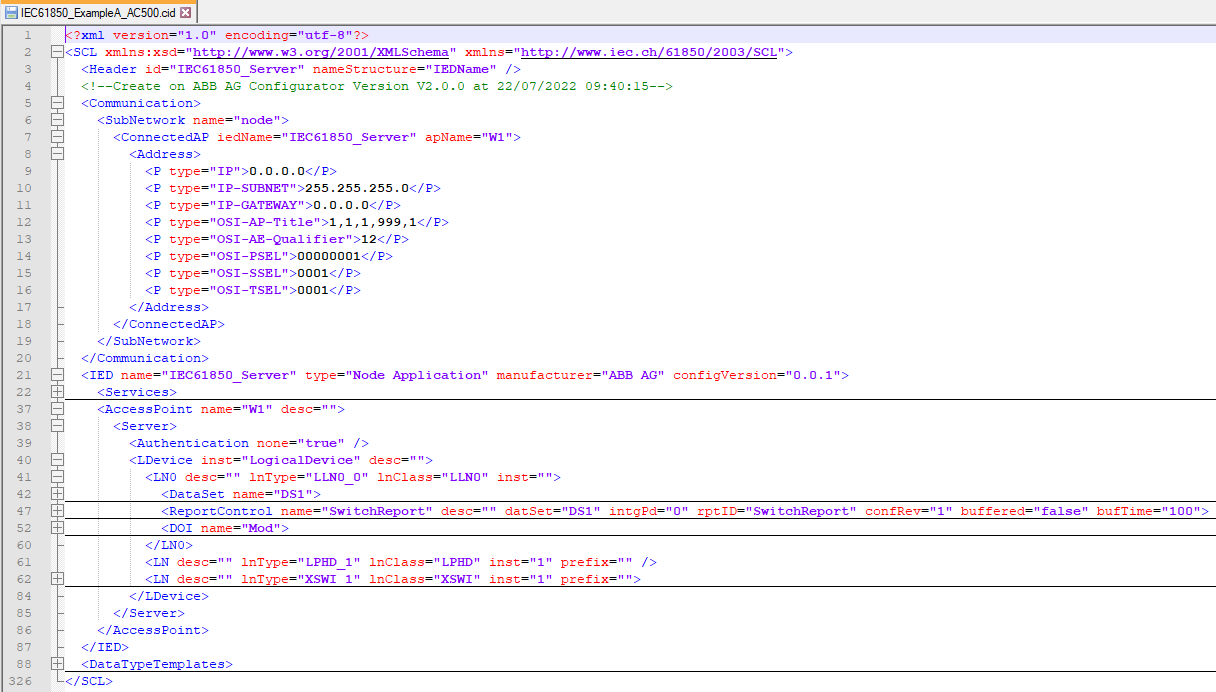After configuration of the “IEC 61850 Server” including logical nodes, data sets, MMS reports and GOOSE control blocks the configured IED can be exported as .cid file, by the menu entry “IEC61850 Export Server”.

You can choose a folder and a filename, for example: IEC61850_ExampleA_AC500.cid.
This file is based on XML and can be opened in any text editor:

The extension “.cid” (Configured IED Description) contains the configuration of a concrete IED with instantiated logical nodes (line 41, 61 and 62), data sets (line 42) services (line 47) and communication addresses (line 8-17).
This file can be imported in other IEC 61850 engineering tools, either system configurator or IED configurator for other IEDs.
The IP address information (line 9-11) is empty, since in AC500 the IP address configuration is decoupled; it is done in the “IP-Configuration” tool, possibly in a later step.
If the correct IP address of the AC500 IED is required by the other IEC 61850 engineering tool, it must be updated in the “.cid” file, which can be done using any text editor:

⮫ “Configuration of the IP settings with the IP configuration tool”





